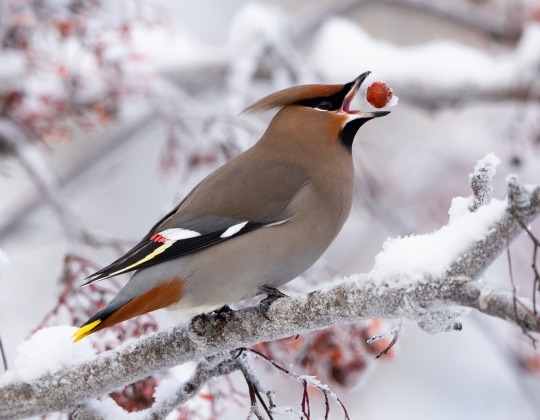Note
do you have any herps and/or birds that look.. fake? ai-generated, almost? things that just look Absolutely Ridiculous. like That is not a real animal that is a small child doing their best approximation of an animal with a crayon
To me there are certain colors that are so vibrant or so patterend and bright that if I hadnt seen them in real life myself, I might think they were AI or otherwise fake...

Grandala (Grandala coelicolor), male, family Turdidae, order Passeriformes, northern India
photograph by Adityaa Chavan

Grandala (Grandala coelicolor), EAT A TASTY MOFF!!!, family Turdidae, order Passeriformes, Sela Pass, Arunachal Pradesh, India
photograph by Kamlesh Mirkale

Rainbow Lorikeet (Trichoglossus moluccanus), family Psittaculidae, order Psittaciformes, VIC, Australia
photograph by Fir0002

Rainbow Lorikeet(Trichoglossus moluccanus), family Psittaculidae, QLD, Australia
Photograph by Dave Arnold Wildlife Photography
489 notes
·
View notes
Text



Peekaboo! Great Spotted Woodpecker/större hackspett, Chaffinch/bofink, and European Robin/rödhake. Värmland, Sweden (March 28, 2021).
690 notes
·
View notes
Text

Phil Davies
"The Egret was in shadow and the background was in full sun"
14K notes
·
View notes
Text

Acorn Woodpecker (Melanerpes formicivorus), LEUCISTIC, family Picidae, order Piciformes, northern CA, USA
Photograph by Thy Pygmy Owl Tour
1K notes
·
View notes
Text






⋖ Red-tailed Black-Cockatoo ⋗
Beautiful parrots native to Australia. The males have a bright red tail and females have golden stripes and accents on their feathers🪶
2K notes
·
View notes
Text

Bohemian Waxwing (Bombycilla garrulus), EAT A FROSTY BERRY!!!, family Bombycillidae, order Passeriformes, Alaska
photograph by Lisa Hupp/USFWS
2K notes
·
View notes
Text





Green Woodpecker/gröngöling. Värmland, Sweden (April 5, 2021).
594 notes
·
View notes
Text

went on the pacific parrotlet wikipedia page and was introduced to echo smithour
1K notes
·
View notes
Text






the juan fernández firecrown is a critically endangered hummingbird endemic only to isla róbinson crusoe, one of three islands on the juan fernández archipelago. males and females are very distinct from each other; males are a bright cinnamon-orange, while females have a bluish-green upperside and white underside. like other hummingbirds, they primarily feed on nectar from native plants, although they also feed on introduced species like eucalyptus. sadly, destruction of native trees is believed to be behind the declining population of this species.
393 notes
·
View notes
Text




Today, migration royalty visited - a Purple Finch! I spotted him from my office and snapped some photos with the DSLR through the dirty window (1 + 2). And I almost thought he was by the cam feeder too but nope, the other one is a House Finch. When he got angry at the Goldfinch, you could see his non-red wing bars and some of the stripes on the belly. They can be tough to ID! I hope the Purple comes back tomorrow and visits the feeders with cameras.
166 notes
·
View notes
Text
Please enjoy this delightfully ridiculous mating display from a Snowy Egret in peak breeding plumage. That signature gurgling call you can hear at the start of the video is one of my favorite noises in the animal kingdom! This is maybe the best time of year to go birding where I live as the swamps and wetlands are simply electric with activity and life. Everywhere you turn your head there is something remarkable to behold.
2K notes
·
View notes
Text

The first sighting of a bluebird is always so exciting!
217 notes
·
View notes
Text


Today's bird is this white breasted nuthatch!
356 notes
·
View notes
Text






Eurasian Bullfinch/domherre. Värmland, Sweden (April 5, 2021).
2K notes
·
View notes


